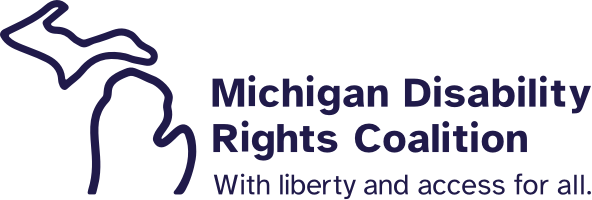Disabled And Here
Monday, November 18, 2019
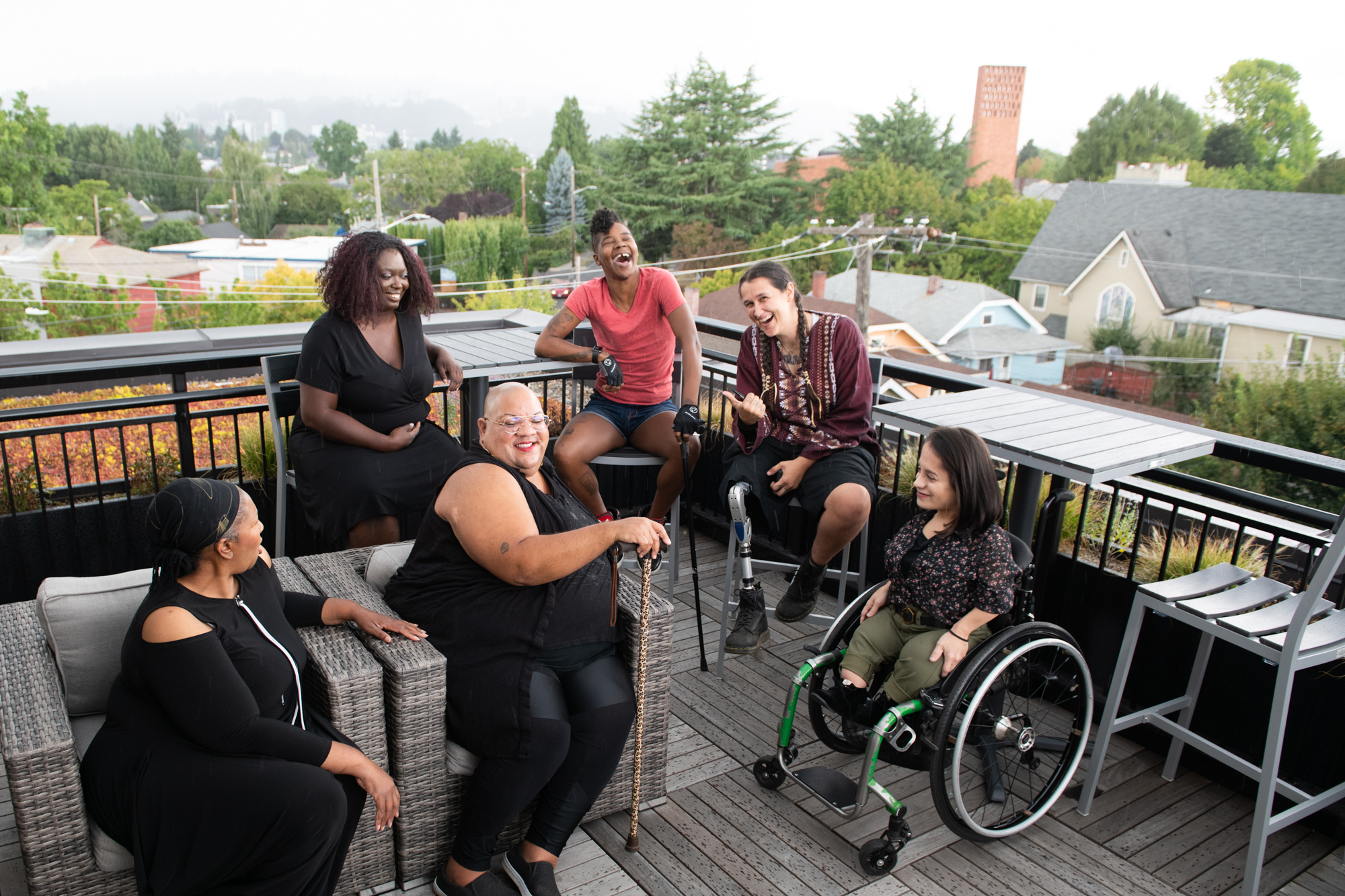
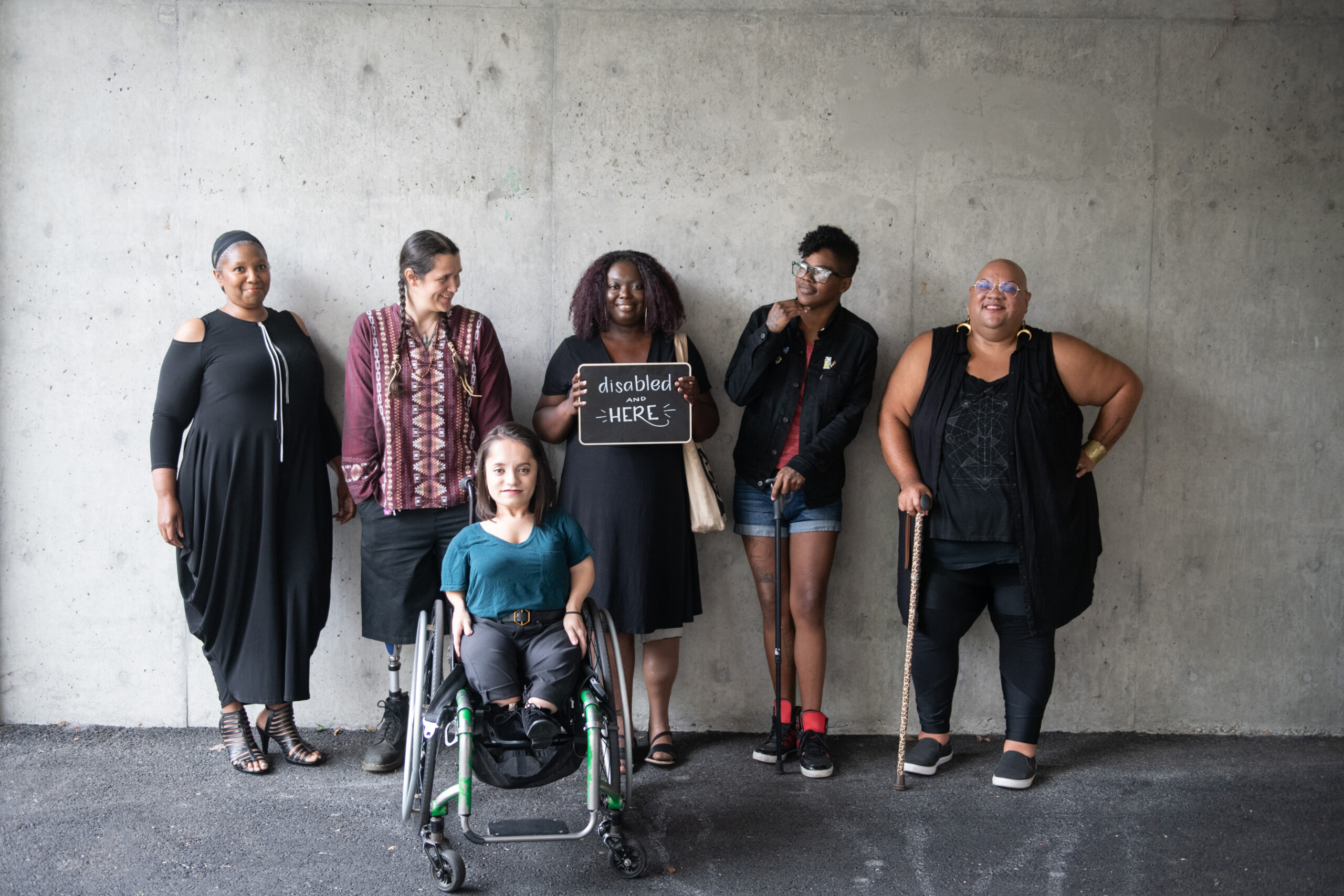
Six disabled people of color smile and pose in front of a concrete wall. Five people stand in the back, with the Black woman in the center holding up a chalkboard sign reading “disabled and here.” A South Asian person in a wheelchair sits in front. Photo by Chona Kasinger, Disabled And Here project.
By Jen Mullins, BS, CTRS, MATP Staff
One of the most engaging aspects of my job is marketing! I am a storyteller by nature and so I enjoy listening to others tell their stories and crafting my own narratives. A well told story can bring people together by sharing about a specific cause and/or increasing awareness. In text-based marketing, I very much agree with the old adage that ‘a picture is worth a thousand words’. I use photos and other visuals (such as emojis on social media or thoughtful spacing and use of white space in between text) whenever possible.

Missing photo icon that says “Image not found”
Both in general marketing efforts and specific marketing efforts that include stories about people with disabilities and their Assistive Technology (AT), I have found hardly any inclusive, representative, and high quality stock photographs to use. The majority of photos I have found are lacking; many of these photos have been taken thru the “medical model” lens (so to speak) where people with disabilities are portrayed as something to be cared for. On the flip side, people with disabilities can often be portrayed as “inspiring”, but we’re not here to inspire you; for more on this check out Stella Young’s TedTalk. To me, these kinds of photos can be harmful if they are the majority of photos we see of people with disabilities in marketing; we are more than just needs and we don’t want your pity! As a womxn with a disability myself, I know I look different from the outdated photos I see; it’s extremely frustrating not to see people with disabilities portrayed as as authentic, capable, confident, and whole people.
I’ve spoken with co-workers about accessing the kinds of stock images we really want to exist and thankfully I’ve been met with agreement and enthusiasm about the need for these kinds of representative & authentic photos. One of my co-workers and I have even discussed brainstorming a campaign where we have an open call for anyone who wants to be photographed and creating a shared image library.
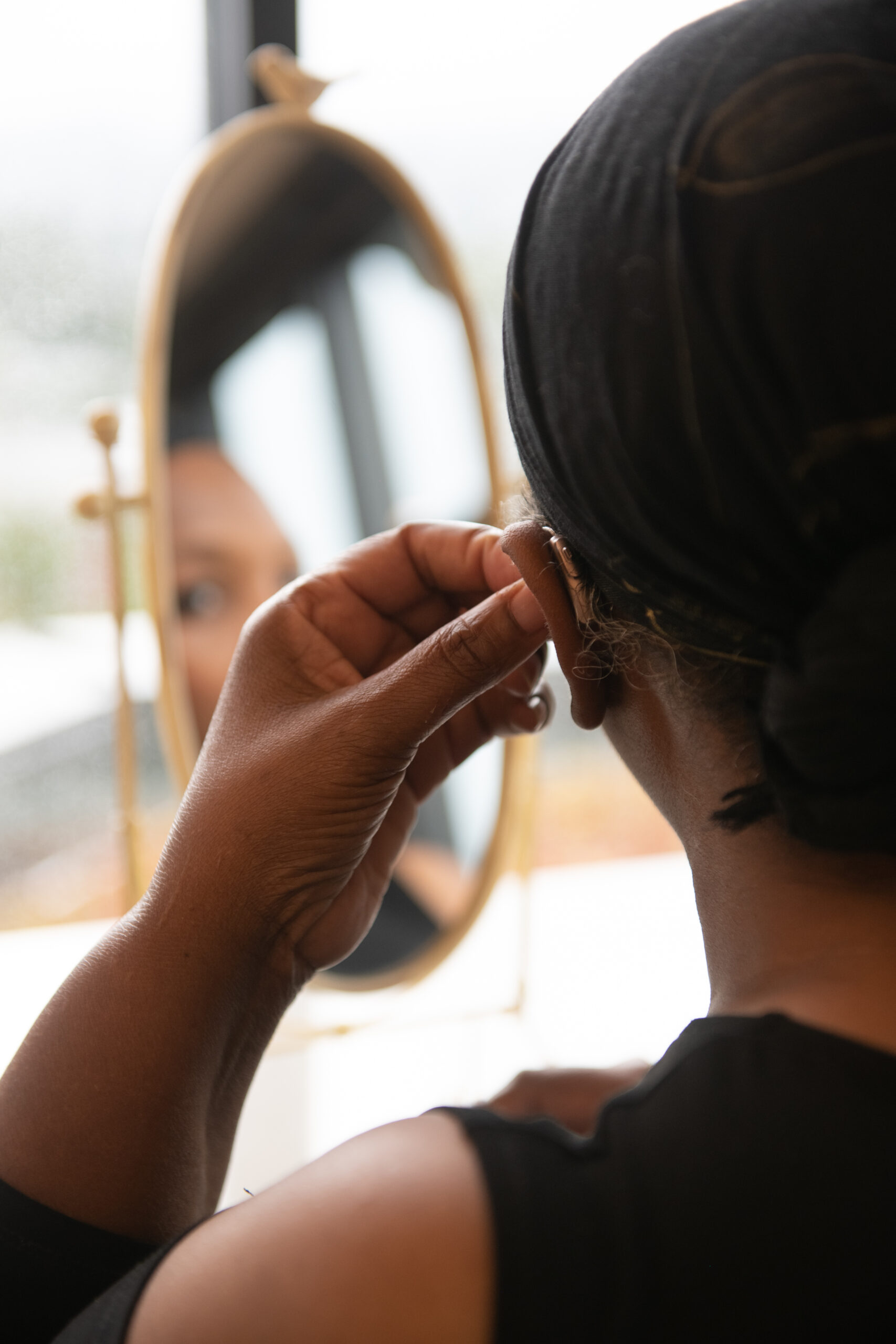
Close-up of a Black woman putting a hearing aid into her left ear. She is dressed in all black, with her pulled back by a scarf, and looking into a tabletop mirror.
I’m happy to share that over the weekend I learned about Disabled And Here. “The Disabled And Here Collection is a disability-led effort to provide free and inclusive stock photos shot from our own perspective, featuring disabled BIPOC (Black, Indigenous, People of Color) across the Pacific Northwest. The Disabled And Here collection is published under Creative Commons attribution licensing, which means you can use, share, and adapt the images for free with appropriate credit. Photos should be attributed to Disabled And Here. When possible, please link back to the Disabled And Here project page. We ask that you be thoughtful in how you use these photographs.”
These photos are high quality, feel authentic, and include positive portrayals of diverse people with disabilities and their AT. I am so excited to use these photos in my marketing work! Below is my favorite photo of the collection. This photo features Galadriel Mozee standing confidently and using their cane. In this piece, Galadriel shares, “accessibility should be an infrastructure, not an afterthought. If you slap a ramp on the entry, but the hallways are too narrow, the chairs have arms, the space is scented, the hand-outs are only written in English, on and on, then you’re not creating accessible space. Utilize and pay people with lived experience of disability to help build space that is centered around accessibility for everyone.” Ironically it’s a little hard for me to put into words exactly how I feel, but I’ll try: when I look at Galadriel in this photo and read their story, I feel strength, hope, and connection.
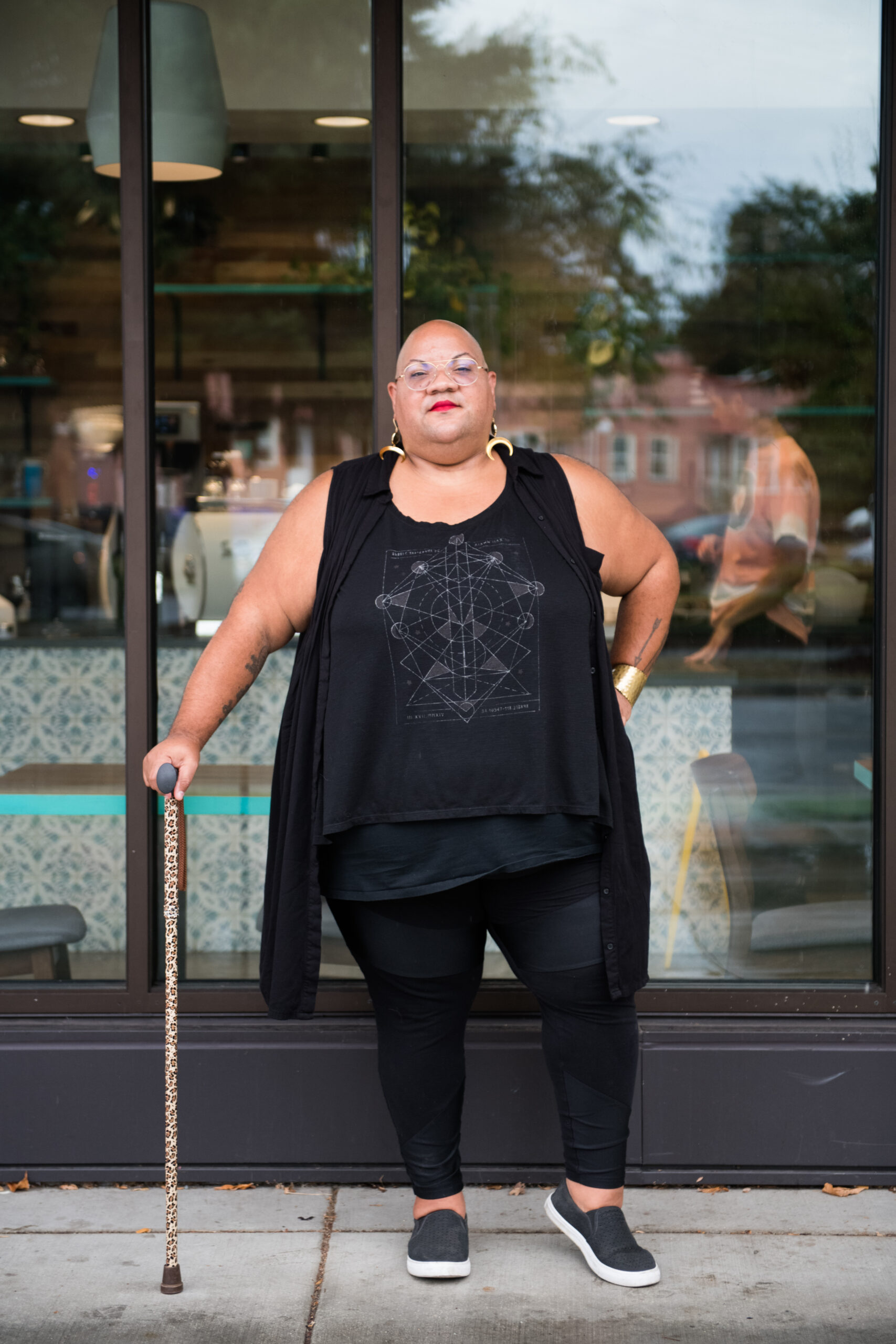
A Black non-binary person stands casually outside a cafe while leaning on their leopard print cane. They are dressed in all black and have a shaved head, glasses, and a red lip, along with moon earrings and a gold bracelet. Photo by Chona Kasinger, Disabled And Here project.
